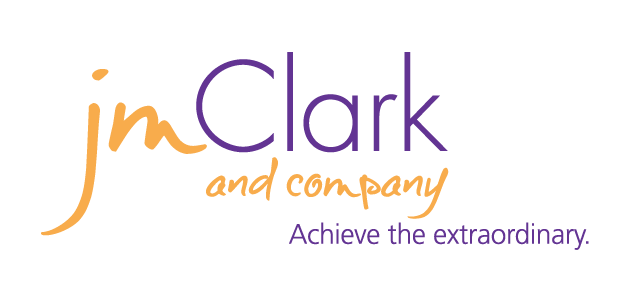
Equality for Women: Do We Need an Evolution or Revolution?
The question for today is “how much development of females in the workplace is the right amount?”
Like the answer often used by lawyers, “It depends.” It depends on the culture and the organization.
Throughout my career, I’ve heard many justifications and quite frankly fear-based excuses as to why organizations can’t create an environment where women feel they are equal.
The response to let’s do X, is often met with “we couldn’t do ‘that’ because…”
- the men would think we are treating the women special
- we don’t want to rock the boat
- women don’t want to be treated differently
- that would cost a lot of money
Is there a possibility of one or more of these things happening, you bet!
However, when we look closer, there is a counter to each one.
- IF men and women are both offered equal opportunities, what’s the beef?
- IF we never challenge the status quo, can and will we ever get better?
- How do we know what women want unless we create an environment where it’s safe to speak up?
- What is the lost opportunity cost of missing out on a talent pool with the knowledge, skills and abilities that are not only needed to meet today’s challenges, but are critical to taking us to the next level?
Equity and equality come in many shapes and sizes. There are the obvious ones including equal pay for equal work and benefits. Then there’s the more subtle, but equally important factors of someone feeling like they belong, they matter and that they are making a difference … that is where the discretionary effort comes from.
Early in my career, there were no female role models in the business world. For years, I was the only one who looked like me in the room. I’d read everything I could get my hands on regarding leadership (most of it written by men). I’d watch, listen and observe my male counterparts on what I should and should not say and do. I learned from those who did it well, as well as those who did not.
The good news is that I was a good student and was rewarded for it. The bad news is that I had so much more to give than I allowed to surface. Was that because my counterparts actively “put me in my place?” The answer in some cases is yes. However, those were the minority.
The bigger challenge was that I did not feel safe enough – or confident enough – to bring my whole self to the table. At that time, there weren’t many safe environments for women to speak up, share best practices, support and challenge one another on an equal playing field.
Yes, we have made lots of progress.
But the question is: Are we doing enough?
Are we where we want to be? Are we doing all we can? The success of our future is depending on all of us, females and males alike. The challenges of today are many and if the past is a predictor of the future; there is a high probability that tomorrow’s challenges will be even greater and more complex.
Reality is that we need all the help we can get, we need each other. Our daughters, granddaughters, nieces, and the young women wanting to make their mark on the world are watching and waiting, along with their male counterparts.

Do we need an evolution or a revolution? Truth is, we don’t have time for things to gently unfold.
Ever wonder which organizations are getting ahead and why? Read on …
Some organizations are benefitting by attracting, retaining, developing and promoting women.
They actively:
- Invest in developing leadership qualities in females and males alike.
- Create safe learning environments where communities of women share and learn.
- Encourage and recognize males for mentoring and investing in female talent.
- Recognize senior females who lead by example. Those who model what women in leadership look like: demonstrating confidence, collaborating with, and speaking up with male counterpart and for empowering and elevating other females.
Vicky Valet, Forbes Staff and author of Meet America’s Best Employers for Women in 2021, has us take a look at the Booz Allen Hamilton organization who has earned the distinction of being No. 1 on Forbes’ annual ranking of America’s Best Employers for Women.
The U.S. Census Bureau and Federal Reserve show that 32.1% of unemployed women ages 25-44 left the workforce by July 2020 due to childcare demands (created by Covid), as compared with just 12.1% of men in that same group.
Betty Thompson, Chief People Officer at Booz Allen Hamilton, shares that they saw just the opposite and attributes it to the fact that they were willing to work with women to help them balance. Consider the bottom-line impact of being able to retain skilled, experienced talent during some of the most tumultuous times we’ve experienced in recent years.
Thompson goes on to say that one of the most important factors is the ability to make it to the top. Today, women make up the majority of the C-suite and nearly half of the board at Booz Allen Hamilton.
When BNSF Railway named Kathryn Farmer as CEO, making her the first woman to helm a major north American railway, Judy Carter, Chief Human Resources Officer at the Berkshire Hathaway-owned business, hears people say, “I need to be able to see myself to know that is possible, to keep me inspired, and to know I work for a company that will promote women.”
Some ways you and your organization can invest in women:
- Create a safe-zone forum where females can openly ask questions and discuss their challenges.
- Ask them what is working well and what could be working better.
- Build a support community of females and males.
- Have authentic, pay-it-forward senior female leaders meet with the group.
- Leverage strengths, co-create solutions and share.
This is a call to action to both women and men.
There are so many ways to move the needle in the right direction, but remember a successful future depends on a revolution not an evolution.
How much time, energy and money are you and your organization investing in developing females and is it the right amount?
Are you willing to be the one who raises the flag?
Are you willing to have a strategic conversation with senior leaders about the benefits?
Are you willing to help others see what they might be missing when it comes to investing in talent?
I encourage you to take that step, you’ll be glad you did.
If you would like to brainstorm about “how to be the one that makes a difference in your organization and the lives of many,” please reach out to me at joan@jmclark.com




Thank you for your sharing. I am worried that I lack creative ideas. It is your article that makes me full of hope. Thank you. But, I have a question, can you help me?
Your point of view caught my eye and was very interesting. Thanks. I have a question for you.
Thank you for your sharing. I am worried that I lack creative ideas. It is your article that makes me full of hope. Thank you. But, I have a question, can you help me?
Vous pouvez utiliser un logiciel de gestion des parents pour guider et surveiller le comportement des enfants sur Internet. Avec l’aide des 10 logiciels de gestion parentale les plus intelligents suivants, vous pouvez suivre l’historique des appels de votre enfant, l’historique de navigation, l’accès au contenu dangereux, les applications qu’il installe, etc.
Thank you for your sharing. I am worried that I lack creative ideas. It is your article that makes me full of hope. Thank you. But, I have a question, can you help me?